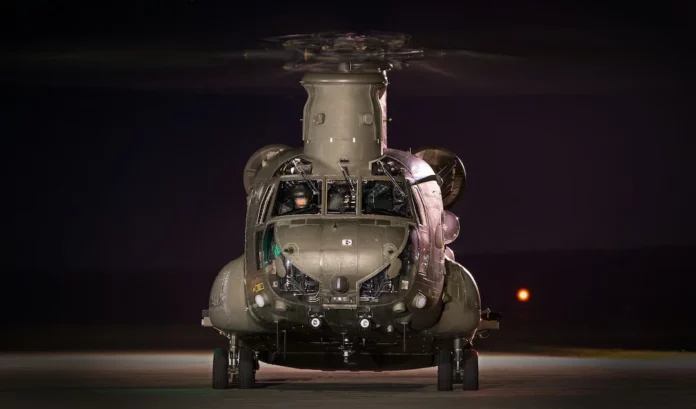The Vertical separation limit, also known as VSM (Vertical Separation Minimum), is a critical element in aviation that ensures safe separation between aircraft flying at different altitudes. It refers to the minimum vertical distance that must be maintained between aircraft to prevent collisions and maintain airspace safety. In this article, we will explore the significance of the Vertical separation limit in aviation and its implications for air traffic control and flight operations.
Contents
Understanding the Vertical Separation Limit
Airspace is divided into multiple layers, or flight levels, with each level assigned a specific altitude range. The Vertical separation limit defines the minimum vertical distance required between aircraft flying at different flight levels to prevent potential collisions. It ensures adequate safety margins and allows air traffic controllers to efficiently manage airspace congestion.
The International Civil Aviation Organization (ICAO), a specialized agency of the United Nations, has established standard practices and regulations to maintain safe separation between aircraft. According to ICAO, the Vertical separation limit varies depending on the type of airspace, aircraft performance, and the navigational aids available.
Currently, the most commonly used Vertical separation limit is 1,000 feet or approximately 305 meters. This means that aircraft flying at adjacent flight levels must maintain a vertical distance of at least 1,000 feet to ensure safety. However, in certain cases, the separation limit may be reduced to 500 feet, especially in areas with advanced air traffic control systems and radar coverage.
It is important to note that the Vertical separation limit is just one aspect of maintaining safe airspace. Other factors, such as lateral separation (horizontal distance between aircraft), radar surveillance, and communication systems, also play a significant role in ensuring effective air traffic control and collision avoidance.
The Importance of Vertical Separation Limit
The Vertical separation limit is crucial for maintaining safe and efficient air travel. Here are some key reasons why it is essential:
1. Collision Avoidance: The primary objective of the Vertical separation limit is to prevent mid-air collisions between aircraft. By mandating a minimum vertical distance, it reduces the risk of vertical conflicts and provides adequate buffer space for aircraft to maneuver safely. This is particularly important in congested airspace or during periods of high air traffic.
2. Vertical Planning: The Vertical separation limit allows air traffic controllers to efficiently manage the flow of aircraft at different altitudes. It enables them to divide airspace into distinct flight levels, optimizing route planning and reducing congestion. This helps maintain smooth operations and minimizes delays for airlines and passengers.
3. Aircraft Performance: Aircraft performance capabilities, such as climb rates and descent rates, are crucial factors in determining the Vertical separation limit. By considering these factors, air traffic controllers can assign appropriate flight levels and ensure compatibility between aircraft operating in the same airspace. This helps avoid potential conflicts and ensures the efficiency of the airspace.
The Future of Vertical Separation Limit
As air traffic continues to grow globally, there is a need for more efficient airspace utilization and enhanced safety measures. To address these challenges, several initiatives and technologies are being developed to improve the Vertical separation limit:
1. Reduced Vertical Separation Minima (RVSM): RVSM is a concept aimed at reducing the Vertical separation limit from 1,000 feet to 300 feet between certain flight levels. This enables increased airspace capacity and allows for more efficient routes, reducing fuel consumption and emissions. RVSM implementation requires special equipment and aircraft certification.
2. Automatic Dependent Surveillance-Broadcast (ADS-B): ADS-B is a surveillance technology that enhances air traffic control capabilities by providing real-time aircraft position and identification data. It enables more precise tracking and improves situational awareness, contributing to better Vertical separation management and overall airspace safety.
3. NextGen Air Traffic Management: NextGen is a comprehensive modernization initiative of the United States’ air traffic control system. It incorporates advanced technologies like Performance-Based Navigation (PBN), Time-Based Flow Management (TBFM), and Dynamic Sectorization to improve airspace operations, optimize routes, and enhance the Vertical separation limit.
These advancements and innovations aim to strike a balance between airspace capacity, safety, and environmental considerations. By leveraging new technologies and implementing more efficient procedures, the aviation industry can further enhance the Vertical separation limit and improve overall air traffic management.
Conclusion
The Vertical separation limit, denoted by VSM, is a vital aspect of aviation safety and air traffic management. By maintaining a specific minimum vertical distance between aircraft flying at different altitudes, it reduces the risk of mid-air collisions and enables effective airspace utilization. As the aviation industry progresses, initiatives like RVSM, ADS-B, and NextGen Air Traffic Management will continue to shape the future of the Vertical separation limit, ensuring safer and more efficient air travel.
For More: What is EA in Aviation? (Engineering Authorisation)




